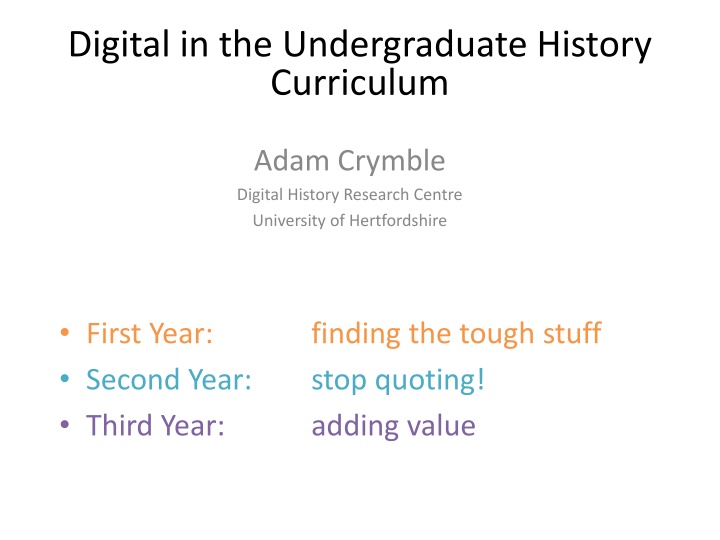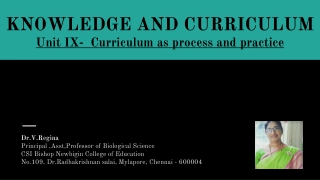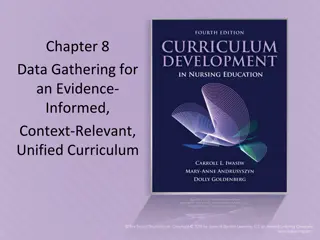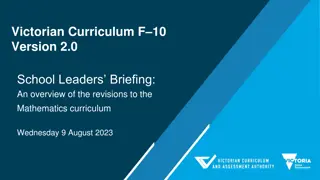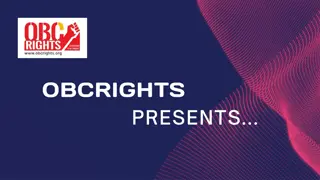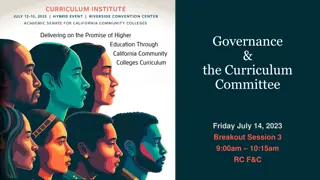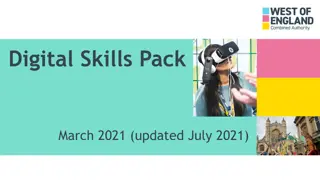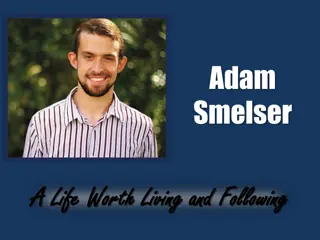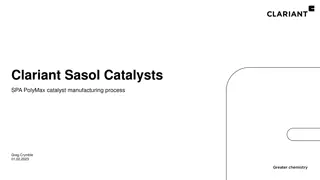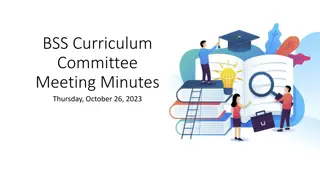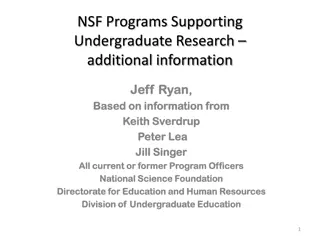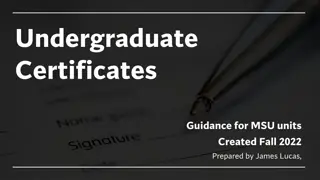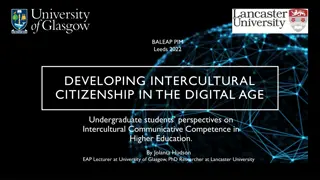Digital Undergraduate History Curriculum - Adam Crymble
Adam Crymble's approach to teaching history at the undergraduate level involves challenging students to move beyond keyword over-dependence, emphasizing the significance of finding valuable information, not just answers. His curriculum integrates digital tools and resources to enhance students' understanding and analytical skills, fostering a deeper engagement with historical materials and datasets. By encouraging students to explore diverse sources and employ digital analyses, Crymble aims to cultivate critical thinking and innovative approaches to historical research.
Download Presentation

Please find below an Image/Link to download the presentation.
The content on the website is provided AS IS for your information and personal use only. It may not be sold, licensed, or shared on other websites without obtaining consent from the author.If you encounter any issues during the download, it is possible that the publisher has removed the file from their server.
You are allowed to download the files provided on this website for personal or commercial use, subject to the condition that they are used lawfully. All files are the property of their respective owners.
The content on the website is provided AS IS for your information and personal use only. It may not be sold, licensed, or shared on other websites without obtaining consent from the author.
E N D
Presentation Transcript
Digital in the Undergraduate History Curriculum Adam Crymble Digital History Research Centre University of Hertfordshire First Year: finding the tough stuff Second Year: stop quoting! Third Year: adding value
Adam Crymble - @adam_crymble First Year: Find the Tough Stuff Britain and Africa, c. 1750-2000 80 students Do not know a pre-Internet world Assume the search box knows Looking for the answer, not an understanding
Adam Crymble - @adam_crymble Problem: Keyword over-dependence
Adam Crymble - @adam_crymble Black Experience in 18th c. London Intended Learning Outcome 1: awareness that the first thing you find isn t necessarily representative of what you could find. Beyond lazy search. Intended Learning Outcome 2: Datasets are a thing.
Adam Crymble - @adam_crymble Find 50 relevant entries Needles in Haystacks: the black dog , the Black Boy public house .
Adam Crymble - @adam_crymble What we need Keyword searchable digital archive Reliable transcription Something tricky to find ( the black ) We used: Old Bailey Online
Adam Crymble - @adam_crymble Outcome Better understanding of digital archives Found tough entries. Introduced to dataset . In many cases translated into better essays Challenge: I had to find all of the answers beforehand. Most of my colleagues couldn t have done that. Requires programming skills. (Found 517 results; students found 16 I didn t).
Adam Crymble - @adam_crymble Second Year: Stop Quoting! A) Weather B) Maps Intended Learning Outcome 1: awareness that quotes are not the only way of knowing in history. Intended Learning Outcome 2: You can do digital analyses.
Adam Crymble - @adam_crymble Problem: Students never before exposed to analysis in history 17 students Digital social science Working with data Looking for trends (big picture) Linking datasets But still doing history through essays.
Adam Crymble - @adam_crymble A) Weather Weather Table London, Gentleman s Magazine (1786)
Adam Crymble - @adam_crymble Step 1: Making Data Ryan Cordell s Class Weather Table London, Gentleman s Magazine (1786) 3 years of transcriptions each 16/17 students completed their share 182,630 points of data in 3 hours Data for every day from 1786-1836 Results made available to whole class for assignment
Adam Crymble - @adam_crymble Step 2: Interpreting Data Are these interesting? Finding Extreme Weather Also for snow, rain, wind, etc.
Adam Crymble - @adam_crymble Step 3: Linking Data Compare bad/good weather to pauper admissions to the workhouse. Is there a correlation? Pauper Lives data, by Jeremy Boulton and Leonard Schwarz
Adam Crymble - @adam_crymble Step 4: Writing Results Conclusion: Paupers enter the workhouse in greater numbers on the days immediately following a few days of poor weather. During the poor weather itself, they tend to wait it out. (no one knew that before).
Adam Crymble - @adam_crymble What we need Something to transcribe Something to link to (csv dataset) We used: Gentleman s Magazine (digitised by Google), Pauper Lives data by Jeremy Boulton and Leonard Schwarz.
Adam Crymble - @adam_crymble Outcome Understanding of analysing rather than quoting Teamwork skills Basic numeracy skills New findings about paupers in the 18th century Challenge: There was no backup plan if the students refused to transcribe.
Adam Crymble - @adam_crymble B) Maps
Adam Crymble - @adam_crymble 1) Getting Data to Map Alumni Oxonienses, British History Online Mini-biographies of 60,000 Oxford students, 1500-1714. Contains place of origin in most instances But impossible to see distribution in textual form
Adam Crymble - @adam_crymble 2) Reformat Done by me beforehand Taken out of the website, and into a spreadsheet so it can be manipulated Extracted structured information (which college they attended, when, etc).
Adam Crymble - @adam_crymble 3) Extracting Keywords Students use Python programming language to extract all county names from entries Students create distinct datasets of 3 sets of students (from different colleges, same college from different years, etc)
Adam Crymble - @adam_crymble 4) Mapping Results 1649-59 1660-75 Origin of students who attended Lincoln College
Adam Crymble - @adam_crymble 5) Writing Results Conclusions: Oxford s position as a royalist stronghold during the Civil War had a significant impact on the origin of students attending certain colleges.
Adam Crymble - @adam_crymble What we need Well-transcribed data with a spatial element Mapping software We used: Alumni Oxonienses (digitised by British History Online), Google Fusion Tables, Python.
Adam Crymble - @adam_crymble Outcome Understanding of Spatial Analysis Visual interpretation skills Exploratory approach to data New findings about 16th century students Challenge: This only works with openly downloadable text. Not page scans.
Adam Crymble - @adam_crymble Third Year: Adding Value 8 students Focus in digital archive building Think about the needs of users Think about what a digital environment can add to history Problem: Students are users, not creators.
Adam Crymble - @adam_crymble 1) Something to work with WO116 - TNA Examinations of British soldiers at the Chelsea Hospital, 19th century Ledgers photographed and PDF d by the National Archives Poorly transcribed in India (by people I hired)
Adam Crymble - @adam_crymble 2) Students challenged to Add value Top student added 16 additional columns of information to each entry: Corrected transcriptions Body part affected by injury Geo-coordinates of parish of origin Occupational definition (quality control) (limited vocabulary tagging) (calculated value) (linked data) Emphasis on reusability, quality control, sustainability, audience needs. Facilitating new research.
Adam Crymble - @adam_crymble What we need Something messily transcribed that we have the right to alter and share Patience We used: Chelsea Pensioner Admission Books (WO116, TNA).
Adam Crymble - @adam_crymble Outcome Understanding of standards and good practice Thinking about audience needs Understanding of linking data Publishable quality datasets that could facilitate new knowledge in a number of fields Challenge: Need data with an appropriate license for repurposing and re-sharing outputs.
Adam Crymble - @adam_crymble The Digital Curriculum First Year: finding the tough stuff Second Year: stop quoting! Third Year: adding value
Adam Crymble - @adam_crymble The Programming Historian Integrating Resource Peer Reviewed, Open Access Open to Submissions 40 Tutorials by 30 Authors @proghist ISSN 2397-2068
Adam Crymble - @adam_crymble Digital History in England Adam Crymble, University of Hertfordshire Pieter Francois, University of Hertfordshire Jane Winters, University of London James Baker, University of Sussex Tim Hitchcock, University of Sussex Sharon Webb, University of Sussex Melodee Beals, Loughborough University Justin Colson, University of Essex James Freeman, University of Bristol Leif Isaksen, Lancaster University Ian Gregory, Lancaster University Bob Nicholson, Edge Hill University Alexander von Lunen, University of Huddersfield
